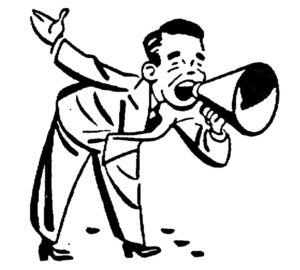
You can’t see Iran from Israel, but on its scenic northern border stand the hills of Lebanon, which at the point where the two countries are closest, is done up to look just like the Islamic Republic.
In Kfar Kila, a town just yards from an Israeli town, you might be in Tehran: Iran’s leaders, past and present, wave from a monument adorned with the emblem from its flag. Blue metal boxes on posts line the roadway, a slot beckoning a few coins to the Imam Khomeini Relief Foundation, named for the cleric who, in 1979, turned Iran from Israel’s stalwart ally to its implacable foe.
[time-brightcove not-tgx=”true”]
In the decades since, every other country in the region has made some sort of accommodation with Israel, persuaded on the one hand by its formidable U.S.-backed military, and on the other by the security-minded tech sector that grew out of that military. Iran was different. It cast Israel as the unifying nemesis in its unlikely ascension to leadership of a Muslim-only Middle East. The eradication of “the Zionist entity” remains core to the radical regime Khomeini installed some 1,000 miles away.
That distance was the largest challenge to the 200 warplanes the Israel Defense Forces launched into Iran the early morning hours of June 13. The primary target was nuclear facilities that have edged ever closer to producing a bomb, and Iranian state television showed footage of an attack on the Natanz facility where uranium is enriched. Bursts of orange flash under a half dozen columns of black smoke billowing just beyond a freeway where traffic continues as usual. It’s daylight, which meant the assault had been under way for hours. It was not yet 3 a.m. when the apartments of senior commanders began exploding in northeast Tehran. Iran announced the deaths of the head of the Islamic Revolutionary Guards Corps, two other senior commanders, and as at least two of the 25 nuclear scientist Israel reportedly targeted.

By first decapitating the military leadership before going after the hardware, Israel’s plan of attack mirrored the one that had made it possible. Last September, it had carried out an extraordinarily effective campaign against Hezbollah—the militia Iran had installed in Lebanon, then armed with more than 100,000 missiles, with instruction that they were to be launched on its order. Those missiles were pointed at Israel, which lived in mortal fear of them. There were more than could be knocked out of the sky by Iron Dome or any other defense system. They were why Israeli hospitals made plans to treat mass casualties in underground garages. The missiles essentially protected Tehran by making Israeli leaders think hard about the consequences of an attack on Iran’s nuclear sites.
“We thought of it as an existential threat,” an Israeli reserve officer told me on June 12, wonder in his voice at the reality that the missiles were gone. They vanished in waves of Israeli bombs last fall – precision strikes that followed the demise of Hezbollah’s leadership deep in their bunkers. The militia’s rank and file, meanwhile, was shattered first by pagers, then walkie-talkies that detonated in their hands, having been boobytrapped by Mossad. After living in fear of Hezbollah for 20 years, Israel decimated it in the space of a month. Then turned to Iran.
The Islamic Republic was looking poorly. Israel had already humiliated it by exploding a bomb in the most highly guarded zone of in Tehran, killing the leader of Hamas in a government guesthouse. None of its gains over the prior two decades—seeing Iraq turned from enemy to vassal by the U.S. invasion; getting to call the shots in Syria, where it saved the Assad regime; and finding a friend in Yemen, where it sponsors the Houthi militia—none of that compared to the loss of Hezbollah. Compelled to reply, Iran’s leaders launched scores of missiles and drones toward Israel. As had been the case in an even larger attack in April, when almost all were knocked down with the help of U.S., European, and even neighboring Arab forces, the result was ineffectual.
Worse, the attack gave Israel standing to retaliate, which it did by launching precision strikes that knocked out Iran’s most important anti-aircraft defenses—in preparation for the assault now underway. In announcing it, Prime Minister Benjamin Netanyahu said the attack would last at least a few days, and noted that the targets included Iran’s ballistic missiles. Iran has so many that, even from 1,000 miles away, the numbers could overwhelm any interception systems. “We can’t leave these threats for the next generation,” Netanyahu said. “If we don’t act now, there won’t be a next generation.”
President Trump called the attack “excellent.” Iran’s initial response, reportedly of 100 drones, produced no result. Meanwhile, Israel released footage of what it said were its own commandos on the ground in Iran, with a drone base prepositioned. It said it killed most of the leadership of Iran’s air force, after luring them to a meeting. A half day in, the war was going well.
Like the cascading campaign against Hezbollah, it was the war Israel has been preparing for.
Meanwhile, in Gaza, the other kind drags on: 1,200 civilians and soldiers killed in Israel in one day (and 251 dragged into captivity) and 55,000 civilians and soldiers killed in Gaza over the next 20 months. Israel, accurately, calls Hamas a client of Iran, though the relationship has had its ups and downs. Iran counts itself the leader of the smaller of Islam’s two branches, Shi’ism, and all its other clients align with the sect in some fashion. Hamas is firmly Sunni, which has caused problems in the past. The elimination of Israel is their common ground, and Hamas’ attack of Oct. 7 was intended to ignite. After overwhelming Israel with its strike out of Gaza in the south, its planners’ hope was that Hezbollah would unleash the assault Israelis had long feared from the north, and the “Zionist entity” would collapse.
Instead, Iran instructed Hezbollah to hold back. For the next year, as tens of thousands of Israelis fled their homes near the border, Tehran played the military equivalent of chess, sending a few missiles a day over the border in tit-for-tat exchanges that signaled no change, status quo. As if this could go on forever.



